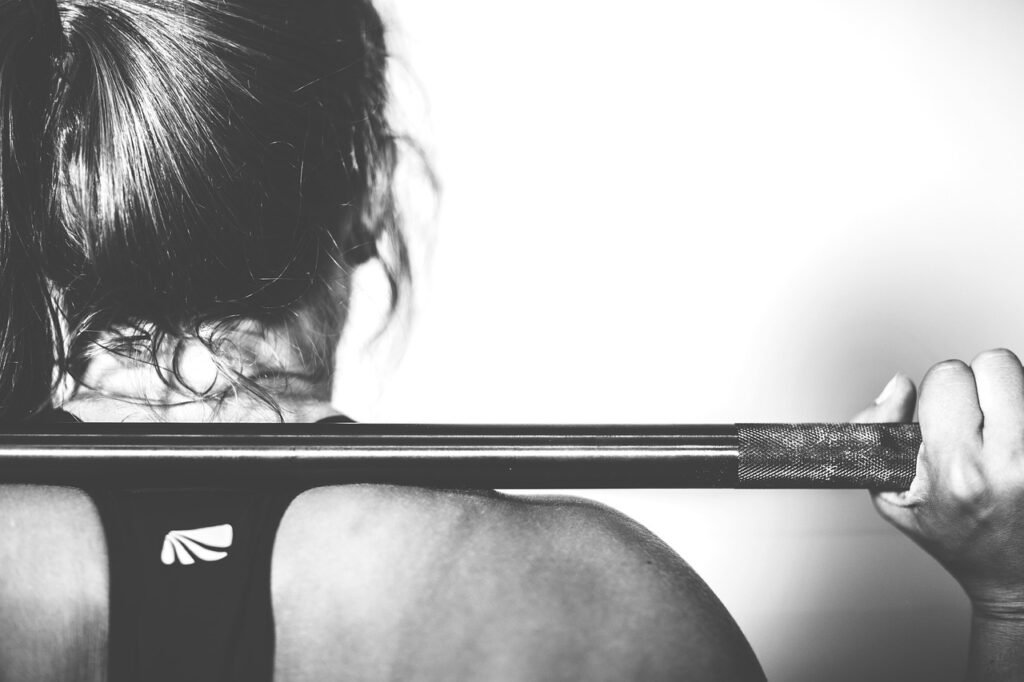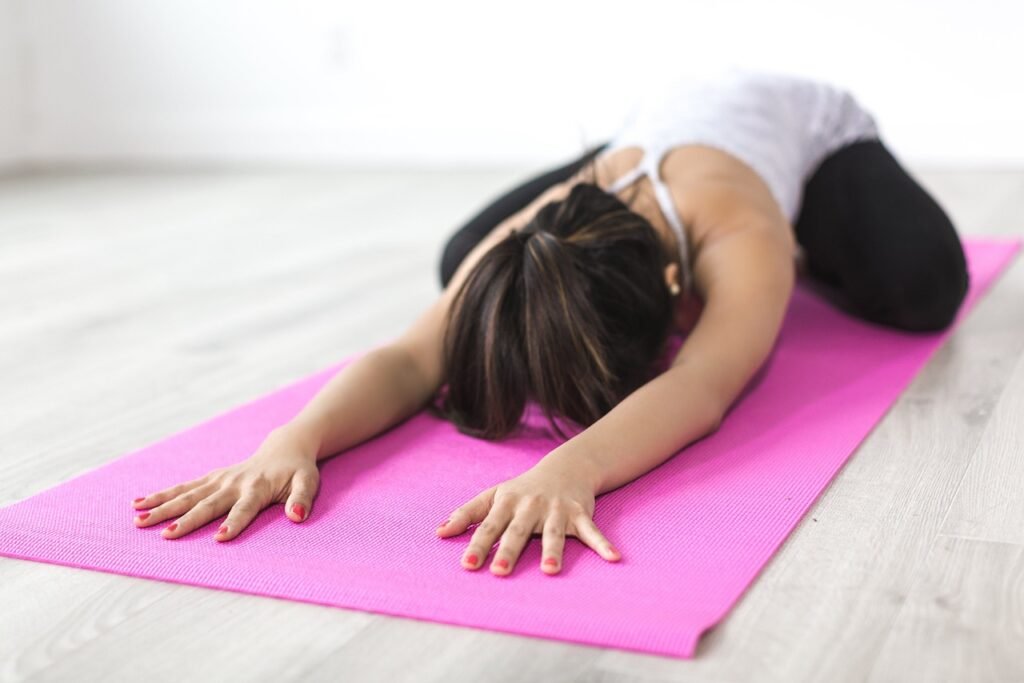So you’ve decided to take your workout to the next level and are looking for ways to adjust the resistance and intensity for a more challenging experience. Well, look no further because in this article, we’ll be diving into the world of Pilates machines and how they can help you achieve just that. Whether you’re new to Pilates or a seasoned pro, understanding how to adjust the resistance and intensity is key to getting the most out of your workout. So, grab your exercise mat and let’s get started!

Understanding Pilates Machines
Pilates machines, also known as Pilates equipment or apparatus, are specially designed exercise machines that are used in Pilates workouts. These machines help in performing a wide range of Pilates exercises that target various muscle groups and improve flexibility, strength, and overall body conditioning.
Types of Pilates Machines
There are different types of Pilates machines commonly used in Pilates studios and gyms. The most popular ones include the Reformer, Cadillac, Chair, and Barrel.
The Reformer is the most widely used Pilates machine, consisting of a sliding carriage that moves along rails, attached to springs and pulleys. It provides a full-body workout targeting the arms, legs, core, and back.
The Cadillac, also known as the Trapeze Table, features a raised platform with various bars, straps, and springs, enabling a wide range of exercises to be performed in different positions.
The Chair is a compact yet versatile Pilates machine with a padded seat and springs equipped to provide resistance for various exercises that target the lower body, core, and arms.
The Barrel, shaped like a half-cylinder, is used for stretching exercises and improving spinal flexibility. It helps in developing core strength and improving posture.
Benefits of using Pilates Machines
Using Pilates machines offers several benefits, making them popular among fitness enthusiasts:
-
Full-body workout: Pilates machines provide a comprehensive workout that targets multiple muscle groups simultaneously, helping you achieve a well-balanced physique.
-
Increased resistance: The springs and bands used in Pilates machines allow you to adjust the resistance and intensity of your workout, challenging your muscles and promoting strength gains.
-
Improved flexibility: Pilates machines facilitate a wide range of motion, enabling you to stretch and lengthen your muscles, leading to increased flexibility and enhanced mobility.
-
Core strength and stability: Pilates exercises performed on machines require the engagement of your core muscles, helping develop a strong and stable core, which is essential for overall strength and balance.
-
Low-impact exercise: Pilates machines are designed with low-impact movements that are gentle on the joints, making them suitable for individuals with joint issues or those recovering from injuries.
-
Increased body awareness: Using Pilates machines helps you develop body awareness, as the resistance and feedback from the equipment allow you to feel and understand the correct alignment and engagement of your muscles.
Importance of Adjusting Resistance and Intensity
Adjusting resistance and intensity plays a crucial role in maximizing the effectiveness of your Pilates workout and avoiding plateaus. It allows you to tailor your workout to your fitness level, goals, and individual needs.
A customized workout experience
Every individual has different fitness levels, strengths, and limitations. By adjusting the resistance and intensity, you can create a customized workout experience that suits your specific requirements. This personalization ensures that your muscles are adequately challenged and that you progress at a pace that is optimal for your abilities.
Avoiding plateaus and maximizing results
Regularly adjusting the resistance and intensity of your Pilates workouts helps prevent plateaus and ensures continued progress. When your muscles adapt to a particular resistance level, they become more efficient in performing the exercises, resulting in diminished muscle gains. By making appropriate adjustments, you constantly challenge your muscles, stimulate growth, and achieve better results in terms of strength, flexibility, and overall fitness.
Factors for Adjusting Resistance
To determine the appropriate resistance level for your Pilates workout, it’s important to consider several factors.
Understanding your current fitness level
Before adjusting the resistance, you need to understand your current fitness level. If you are a beginner, it is recommended to start with lighter resistance and gradually increase it as you gain strength and become more proficient in the exercises. Intermediate and advanced practitioners may require higher resistance levels to maintain the challenge and continue making progress.
Listening to your body’s feedback
Listening to your body’s feedback is crucial when adjusting resistance. Pay attention to how your muscles feel during and after the exercises. If the resistance feels too easy, you may need to increase it. On the other hand, if the resistance feels too challenging and you’re unable to maintain proper form, it may be necessary to decrease the resistance.
Finding the optimal resistance level
The optimal resistance level is one that challenges your muscles without compromising your form or causing excessive strain. Experiment with different resistance settings and listen to your body’s response. It may take some trial and error to find the perfect balance, but once you do, you’ll be able to achieve a challenging and effective workout.
Progressing gradually
It is important to progress gradually when adjusting resistance. Avoid making sudden and significant changes that can lead to muscle strain or injury. Gradually increase the resistance as your strength and proficiency improve, allowing your muscles to adapt and grow steadily over time.
Methods of Adjusting Resistance
Pilates machines offer various methods for adjusting resistance, allowing you to customize the difficulty of your workout.
Using springs and bands
Springs and bands are commonly used in Pilates machines to provide resistance. They are color-coded to indicate their strength levels. Depending on the machine, you can adjust the tension by adding or removing individual springs or by adjusting the spring settings. Adding more springs increases the resistance, while removing or reducing the tension decreases the resistance.
Adding or removing weights
Some Pilates machines, such as the Chair, allow for the addition or removal of weights to adjust the resistance. Adding weights increases the workload on your muscles, making the exercises more challenging. Removing weights reduces the resistance, offering a lighter workout.
Increasing or decreasing tension
Certain Pilates machines, like the Reformer, have adjustable tension settings that allow you to increase or decrease the resistance. By adjusting the tension, you can fine-tune the difficulty level of your workout.
Adjusting pulley positions
Pilates machines with pulley systems, such as the Cadillac, offer the flexibility to adjust the pulley positions. By changing the height or angle of the pulleys, you can alter the resistance and target different muscle groups.

Techniques for Increasing Intensity
In addition to adjusting resistance, there are several techniques you can use to increase the intensity of your Pilates workout.
Improving range of motion
Increasing the range of motion of your exercises can significantly enhance the intensity. By gradually lengthening your movements while maintaining proper form and control, you engage more muscle fibers and challenge your muscles further.
Increasing repetitions
Performing additional repetitions of an exercise can intensify your workout. By gradually increasing the number of repetitions, you provide more volume and workload to your muscles, promoting strength gains and endurance.
Adding tempo variations
Varying the tempo or speed of your exercises can add a new dimension of challenge. Slow and controlled movements engage your muscles for a longer duration, while faster-paced movements increase cardiovascular fitness and muscle endurance.
Incorporating advanced exercises
As you progress in your Pilates practice, you can incorporate more advanced exercises into your routine. Advanced exercises typically require greater strength, stability, and flexibility, providing a higher level of intensity and challenge for your muscles.
Proper Body Alignment
Maintaining proper body alignment is of utmost importance in Pilates to ensure optimal results and prevent injuries.
The role of proper alignment
Proper alignment involves maintaining a neutral spine, engaging the core, and aligning the joints. It helps distribute the workload evenly, prevents excessive strain on specific muscles or joints, and ensures that the targeted muscles are properly activated.
Engaging the core
Engaging the core muscles, particularly the deep abdominal muscles, is essential for proper body alignment and stability. A strong and activated core acts as a foundation, providing support to the spine and facilitating controlled movements.
Avoiding joint strain
Proper body alignment helps avoid unnecessary strain on the joints. By maintaining correct alignment, you reduce the risk of joint injuries and ensure that your muscles work in harmony to support the joints during the exercises.
Staying injury-free
Practicing correct body alignment minimizes the risk of injuries. It enables you to execute the movements in a controlled and safe manner, allowing your muscles to work efficiently and effectively without undue stress or strain on the body.

Working with a Pilates Instructor
Seeking guidance from a qualified Pilates instructor can greatly enhance your Pilates experience and ensure that you adjust resistance and intensity correctly.
Seeking professional guidance
A Pilates instructor can provide expert guidance and instruction, ensuring that you perform the exercises with proper form and technique. They can assess your fitness level, guide you in selecting appropriate resistance levels, and help you progress in a safe and effective manner.
Customizing workouts
A Pilates instructor can tailor workouts to your specific goals, needs, and fitness level. They can modify the resistance and intensity of exercises, provide hands-on adjustments and corrections, and offer personalized modifications for any physical limitations or restrictions.
Getting expert advice
Having a Pilates instructor by your side allows you to obtain valuable feedback and advice. They can assess your alignment, provide cues for engaging the correct muscles, and offer insights into refining your Pilates practice for optimal results.
Tracking Progress
Tracking your progress is essential to gauge your improvement and stay motivated on your Pilates journey.
Setting goals and benchmarks
Setting specific goals and benchmarks helps you measure your progress and work towards achieving milestones. Whether it’s increasing the resistance, improving flexibility, or mastering advanced exercises, having clear goals allows you to track your development accurately.
Keeping a workout log
Maintaining a workout log is a great way to track your Pilates sessions. Note down the exercises performed, the resistance levels used, and any observations or challenges encountered. This log not only serves as a reference for future sessions but also helps identify patterns, progress, and areas for improvement.
Measuring improvements
Regularly reassessing your abilities and measuring improvements is crucial. Take note of how your strength, flexibility, and overall fitness improve over time. By comparing your current abilities to previous benchmarks, you can celebrate your progress and stay motivated to continue challenging yourself.
Common Mistakes to Avoid
To ensure a safe and effective workout, it’s important to avoid common mistakes that can hinder your progress and increase the risk of injury.
Rushing into high resistance
One common mistake is starting with high resistance levels without first establishing a solid foundation and understanding the correct form and technique. It’s important to gradually increase the resistance as your body becomes stronger and more familiar with the exercises.
Neglecting proper form
Neglecting proper form can diminish the effectiveness of your Pilates workout and increase the risk of strain or injury. Focus on maintaining proper alignment, engaging the correct muscles, and executing the exercises with control and precision.
Ignoring body signals
Ignoring your body’s signals and pushing through pain or discomfort is a mistake. Listen to your body and adjust the resistance or modify the exercise if needed. It’s important to distinguish between muscular fatigue and pain that may indicate strain or injury.
Overexertion and fatigue
Overexerting yourself and pushing beyond your limits can lead to fatigue, muscle strain, or even injury. Be mindful of your body’s limitations and respect its need for rest and recovery. Building strength and endurance is a gradual process that requires balance and patience.
Conclusion
Adjusting resistance and intensity is a vital aspect of any Pilates workout. By customizing your workout experience, understanding your fitness level, listening to your body’s feedback, and utilizing different methods of adjustment, you can achieve a challenging and effective Pilates routine. Proper body alignment, working with a Pilates instructor, tracking your progress, and avoiding common mistakes further contribute to maximizing your Pilates workout experience. So, embrace the versatility of Pilates machines, adjust the resistance and intensity to suit your needs, and embark on a journey towards a stronger, more flexible, and healthier body.

